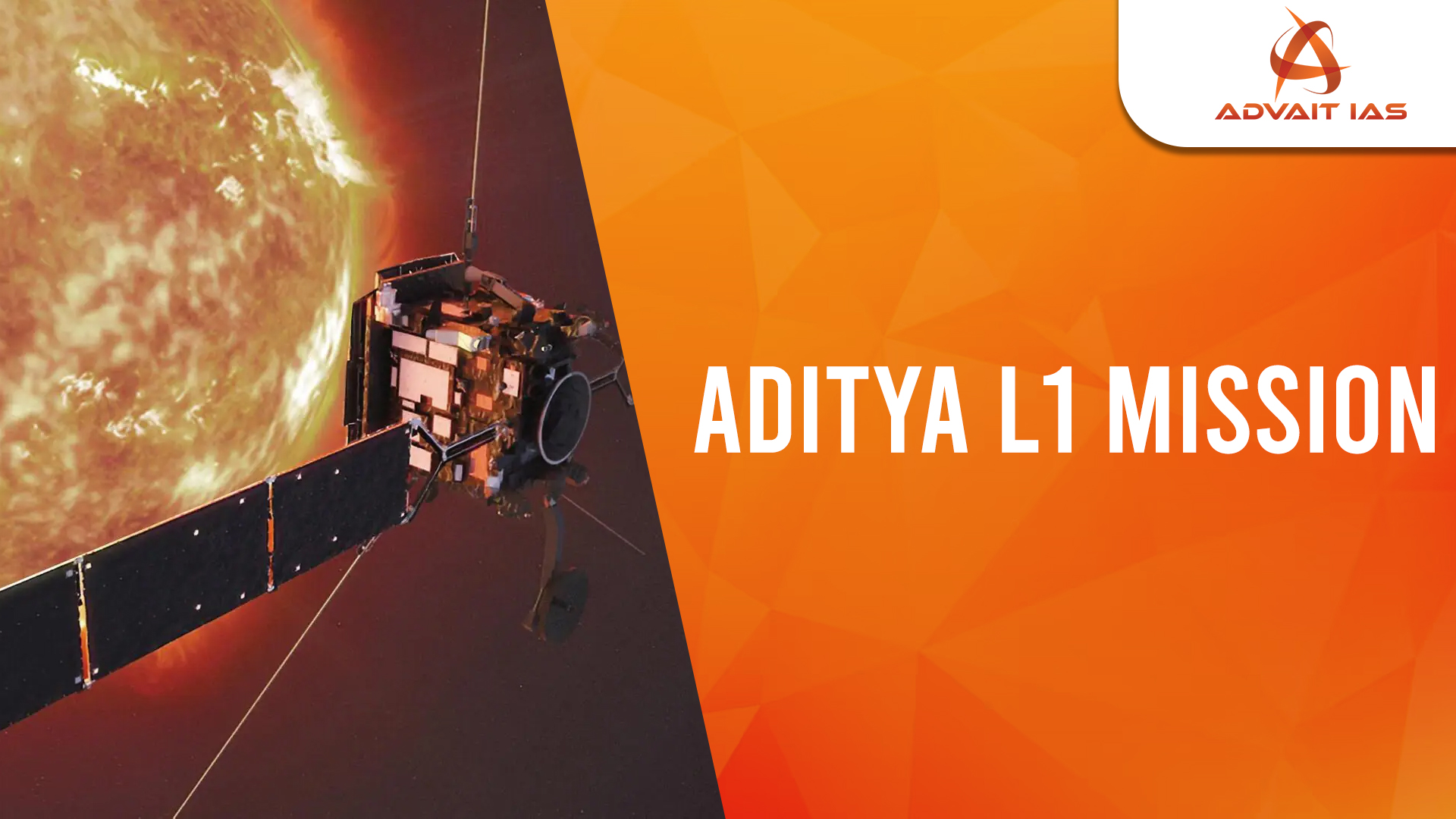Aditya-L1, India’s first scientific solar mission, achieved its first science result. The Visible Emission Line Coronagraph (VELC) aboard Aditya-L1 predicted the onset time of a coronal mass ejection (CME) on July 16, 2023.
Aditya-L1 Mission:
- Aditya-L1 is India’s first space-based solar observatory mission, located 1.5 million kilometers from Earth at the Lagrange Point 1 (L1) in the Sun-Earth system.
- The mission is expected to take about 125 days to reach L1.
- It is ISRO’s second astronomy observatory-class mission, following AstroSat (2015).
- The mission’s trajectory is shorter than India’s previous Mars orbiter mission, Mangalyaan
Objectives:
- Study the solar corona, photosphere, chromosphere, and solar wind.
- Enhance understanding of solar radiation, heat, particle emissions, and magnetic fields, along with their effects on Earth.
Payloads:
- Equipped with multiple scientific instruments designed to capture and analyze solar phenomena from L1.
Lagrange Points
About:
- Lagrange points are positions in space where the gravitational forces between two large bodies, like the Sun and Earth, balance out.
- This balance allows a small object, like a spacecraft, to maintain its position with minimal fuel.
- There are five Lagrange points, each with unique characteristics, enabling stable orbits for smaller masses amid two larger bodies.
Lagrange Points in the Sun-Earth System:
- L1: Ideal for continuous solar observation, as it provides an uninterrupted view of the Sun. It hosts the Solar and Heliospheric Observatory (SOHO).
- L2: Positioned beyond Earth’s shadow, ideal for observing deep space. The James Webb Space Telescope orbits here.
- L3: Located opposite Earth, beyond the Sun, useful for observing the Sun’s far side.
- L4 and L5: Form an equilateral triangle with the Sun and Earth, offering stable positions for studying asteroids and other phenomena.
Coronal Mass Ejections
- Coronal Mass Ejections (CMEs) are large-scale eruptions of charged particles (plasma) and magnetic fields from the solar atmosphere into space.
Impact of Coronal Mass Ejections (CMEs)
- Satellite Disruptions: Affects GPS and communication systems, leading to potential outages.
- Power Grid Fluctuations: Can cause voltage instability and blackouts in power grids.
- Increased Radiation Risks: Raises exposure levels for astronauts and high-altitude flights.
- Radio Interference: Disrupts radio communications, particularly in polar regions.
Significance of Studying CMEs
- Enhanced Space Weather Forecasting: Enables timely predictions and alerts for CME events.
- Protection of Infrastructure: Helps safeguard satellites and power grids from CME effects.
- Communication Resilience: Assists in developing robust systems to withstand solar disturbances.
- Astronaut Safety: Critical for planning and protecting human space missions.
A Coronal Mass Ejection (CME) is a massive burst of plasma and magnetic fields from the Sun’s corona into space, often caused by solar flares. CMEs can disrupt Earth’s magnetic field, affecting satellites, power grids, and communication systems.






